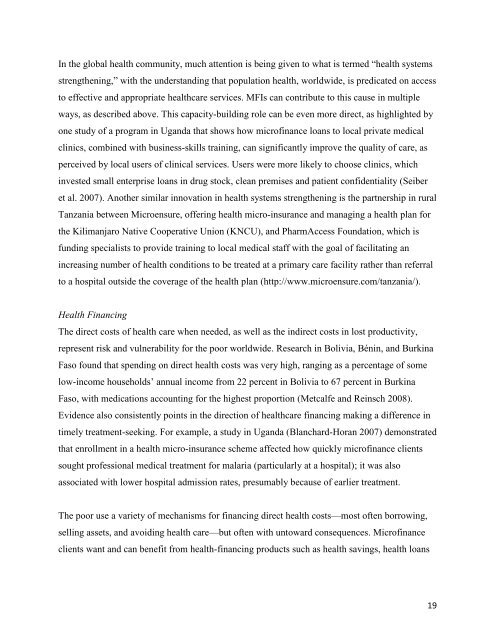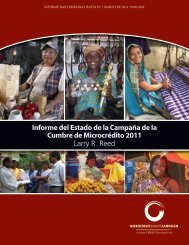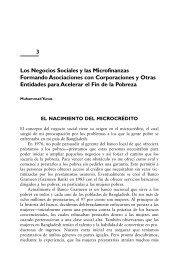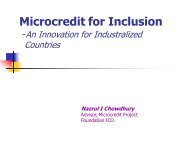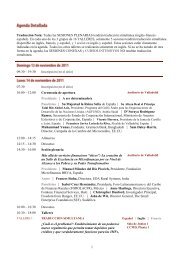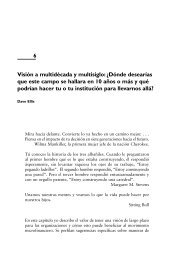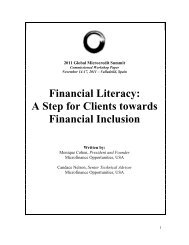Integrating Microfinance and Health - Global Microcredit Summit 2011
Integrating Microfinance and Health - Global Microcredit Summit 2011
Integrating Microfinance and Health - Global Microcredit Summit 2011
Create successful ePaper yourself
Turn your PDF publications into a flip-book with our unique Google optimized e-Paper software.
In the global health community, much attention is being given to what is termed ―health systemsstrengthening,‖ with the underst<strong>and</strong>ing that population health, worldwide, is predicated on accessto effective <strong>and</strong> appropriate healthcare services. MFIs can contribute to this cause in multipleways, as described above. This capacity-building role can be even more direct, as highlighted byone study of a program in Ug<strong>and</strong>a that shows how microfinance loans to local private medicalclinics, combined with business-skills training, can significantly improve the quality of care, asperceived by local users of clinical services. Users were more likely to choose clinics, whichinvested small enterprise loans in drug stock, clean premises <strong>and</strong> patient confidentiality (Seiberet al. 2007). Another similar innovation in health systems strengthening is the partnership in ruralTanzania between Microensure, offering health micro-insurance <strong>and</strong> managing a health plan forthe Kilimanjaro Native Cooperative Union (KNCU), <strong>and</strong> PharmAccess Foundation, which isfunding specialists to provide training to local medical staff with the goal of facilitating anincreasing number of health conditions to be treated at a primary care facility rather than referralto a hospital outside the coverage of the health plan (http://www.microensure.com/tanzania/).<strong>Health</strong> FinancingThe direct costs of health care when needed, as well as the indirect costs in lost productivity,represent risk <strong>and</strong> vulnerability for the poor worldwide. Research in Bolivia, Bénin, <strong>and</strong> BurkinaFaso found that spending on direct health costs was very high, ranging as a percentage of somelow-income households’ annual income from 22 percent in Bolivia to 67 percent in BurkinaFaso, with medications accounting for the highest proportion (Metcalfe <strong>and</strong> Reinsch 2008).Evidence also consistently points in the direction of healthcare financing making a difference intimely treatment-seeking. For example, a study in Ug<strong>and</strong>a (Blanchard-Horan 2007) demonstratedthat enrollment in a health micro-insurance scheme affected how quickly microfinance clientssought professional medical treatment for malaria (particularly at a hospital); it was alsoassociated with lower hospital admission rates, presumably because of earlier treatment.The poor use a variety of mechanisms for financing direct health costs—most often borrowing,selling assets, <strong>and</strong> avoiding health care—but often with untoward consequences. <strong>Microfinance</strong>clients want <strong>and</strong> can benefit from health-financing products such as health savings, health loans19


